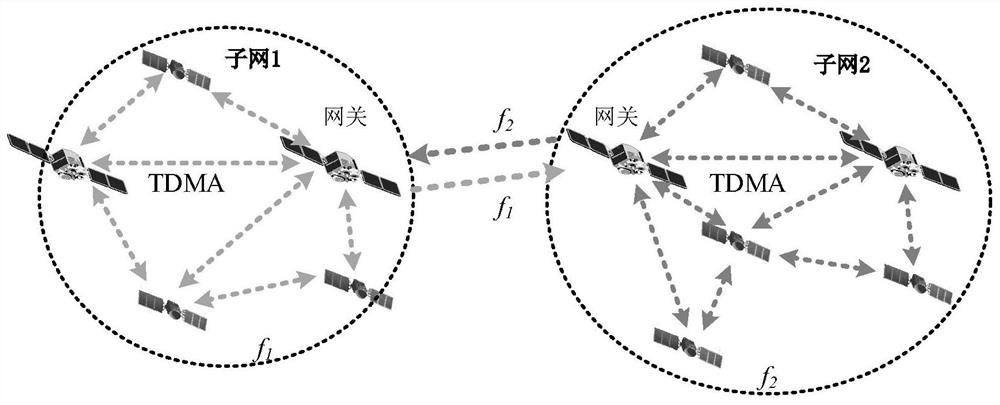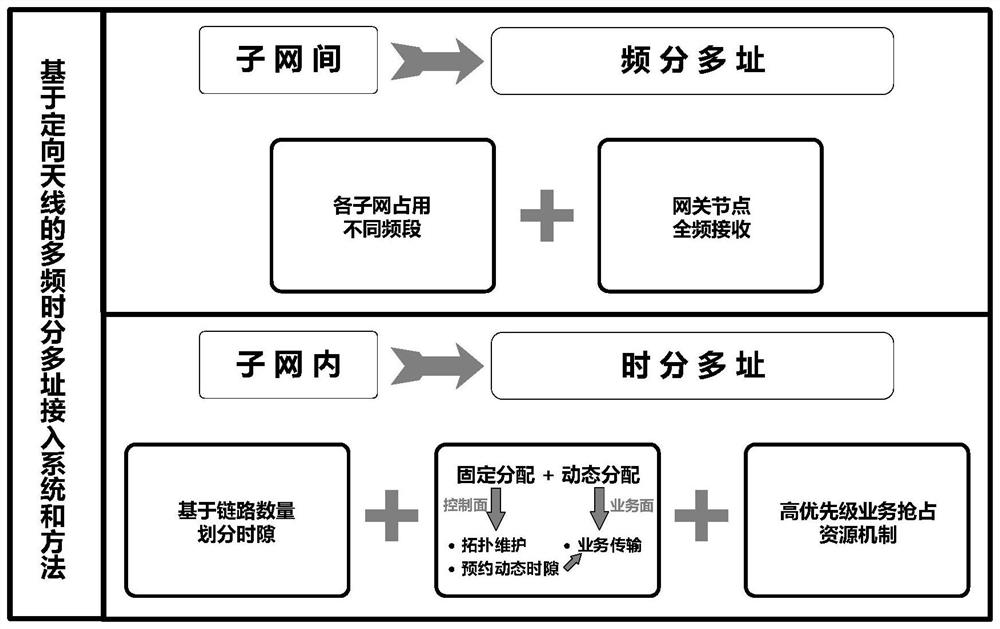Multi-frequency time division multiple access system and method based on directional antenna
A multi-frequency time division multiple access and directional antenna technology, which is applied in the field of aircraft network, can solve the problems such as reports closely related to the distributed aircraft network multiple access method based on directional antenna, and achieves the improvement of system throughput and breakthrough in transmission. The effect of capacity bottleneck and low business loss
- Summary
- Abstract
- Description
- Claims
- Application Information
AI Technical Summary
Problems solved by technology
Method used
Image
Examples
Embodiment 1
[0046] Now that the world has fully entered the information age, the importance of information acquisition is reflected in all aspects of economic and social activities. Among them, the ability to obtain aerial information shows the comprehensive strength of a country and its influence in the international community. Airborne information is mainly obtained through satellites and other aircraft, so the development of aircraft network technology determines whether the acquisition of aerial information can be rapid and effective. At present, the research and application of distributed aircraft networks are still in their infancy, and most of the access technologies focus on the configuration of omnidirectional antennas at nodes. Up to now, there is no multi-access method for distributed aircraft networks based on directional antennas. The present invention proposes A multiple access system and method applicable to a directional antenna scenario.
[0047] The present invention is...
Embodiment 2
[0050] The overall structure of the directional antenna-based MFTODMA access system is the same as that in Embodiment 1. In the present invention, the communication time slots of nodes in the same subnet are divided based on the number of links. specifically is figure 1 The intranet communication between subnet 1 and subnet 2 uses the part of time division multiple access (TDMA).
[0051] Due to the limitation of shadowing effect, communication distance, coverage time and other factors, the aircraft cannot always maintain communication with the ground station. At this time, nodes that cannot directly communicate with the ground station need to exchange information with surrounding nodes to perceive the network topology. Under the condition of directional antennas, when the nodes use unicast communication, if the time is not allocated reasonably or the neighbor nodes to be communicated are not known, conflicts will occur.
[0052] Therefore, in order to ensure that all members...
Embodiment 3
[0054] The present invention is also a directional antenna-based multi-frequency time-division multiple access method, implemented in the above-mentioned directional-antenna-based multi-frequency time-division multiple access system, and the overall composition of the directional-antenna-based multi-frequency time-division multiple access system With embodiment 1-2. see figure 2 , the multi-frequency time division multiple access method based on directional antenna includes the following steps:
[0055] Step 1, subnet division: divide different frequency bands for each subnet, the gateway node supports full-frequency reception, and nodes in the same subnet communicate with each other through time division multiple access.
[0056] Step 2, superframe composition: each superframe is divided into inter-network multiframe and intranet multiframe, inter-network multiframe is divided into inter-network service frame, inter-network fixed subframe and inter-network dynamic subframe,...
PUM
 Login to View More
Login to View More Abstract
Description
Claims
Application Information
 Login to View More
Login to View More - R&D
- Intellectual Property
- Life Sciences
- Materials
- Tech Scout
- Unparalleled Data Quality
- Higher Quality Content
- 60% Fewer Hallucinations
Browse by: Latest US Patents, China's latest patents, Technical Efficacy Thesaurus, Application Domain, Technology Topic, Popular Technical Reports.
© 2025 PatSnap. All rights reserved.Legal|Privacy policy|Modern Slavery Act Transparency Statement|Sitemap|About US| Contact US: help@patsnap.com



